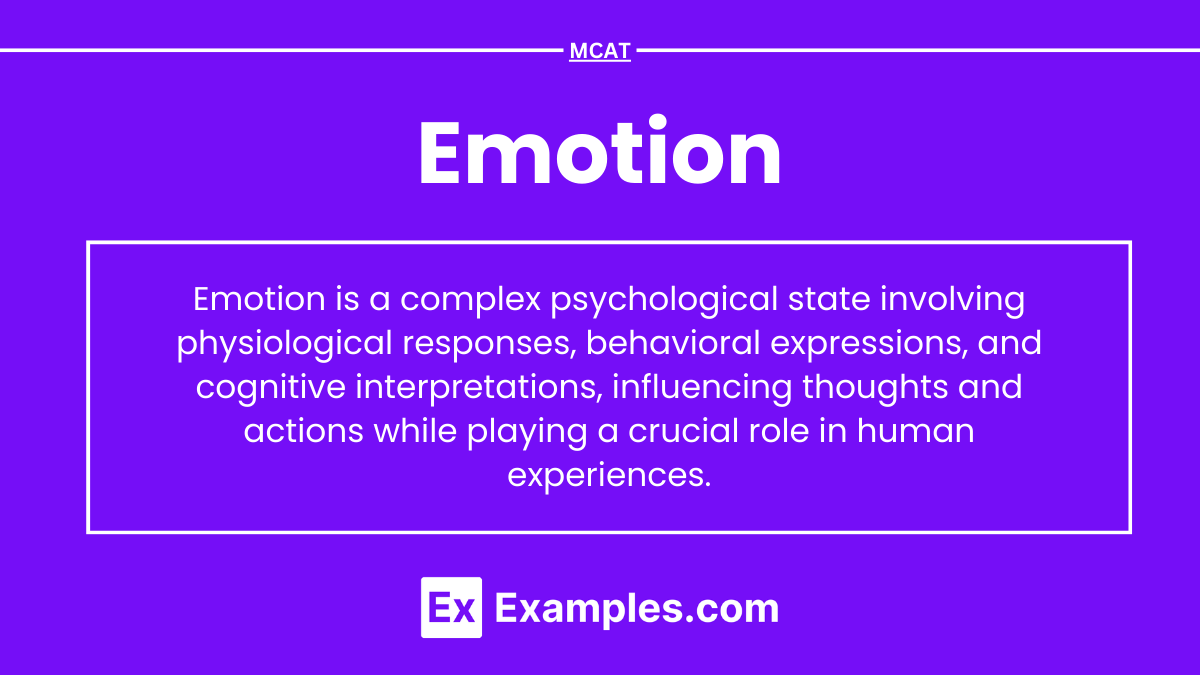Emotion

- Notes
Preparing for the MCAT requires an in-depth understanding of the concept of Emotion, crucial for interpreting human behavior and psychological processes. Grasping the biological and cognitive mechanisms behind emotions, along with various theories of emotion, provides essential insights into how humans perceive, process, and respond to their environments. This knowledge is vital for excelling on the MCAT, as it underpins understanding of complex psychological interactions and mental health principles.
Learning Objective
In studying “Emotion” for the MCAT, you should develop an understanding of the psychological and physiological aspects of emotions, including the major theories explaining emotional experiences and responses. Explore the roles of the amygdala, prefrontal cortex, and hypothalamus in emotion regulation and processing. Evaluate how emotions influence cognitive functions, decision-making, and social interactions. Additionally, understand the adaptive significance of universal emotions and their cross-cultural expressions. Apply this knowledge to interpreting experimental data, analyzing emotional responses in different contexts, and solving MCAT practice questions on emotional regulation and behavioral responses.
1. Theories of Emotion
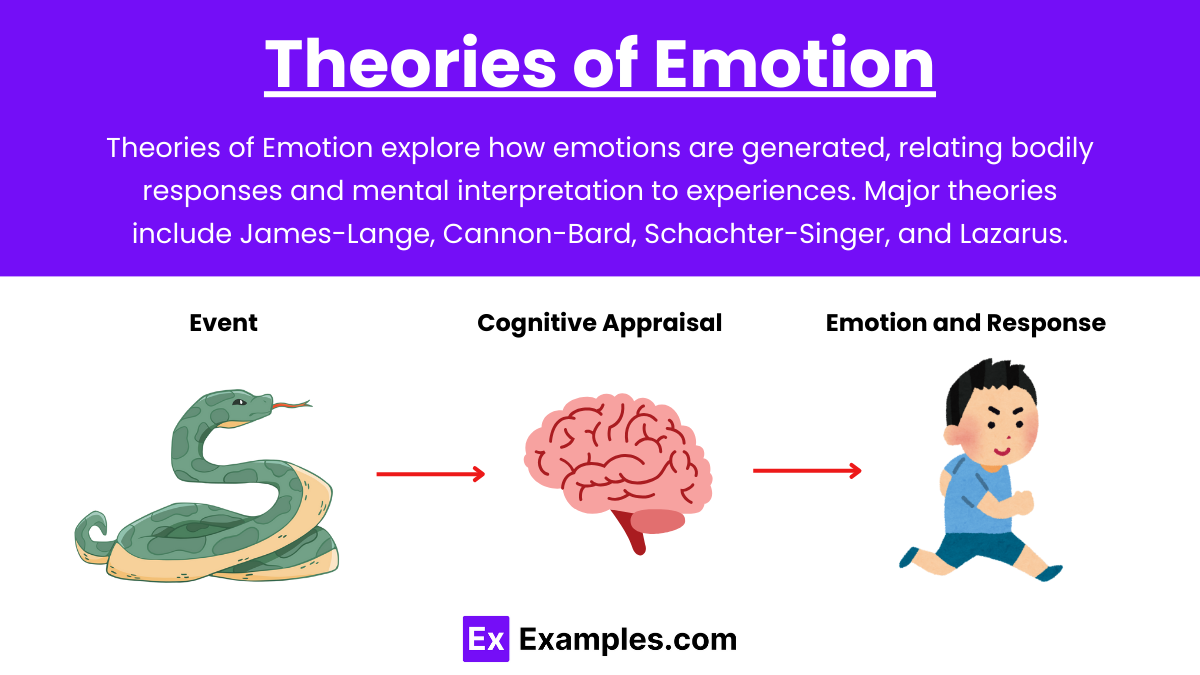
- James-Lange Theory: Suggests that emotions result from physiological responses to external events (e.g., feeling afraid because of a racing heart).
- Cannon-Bard Theory: Proposes that emotions and physiological responses occur simultaneously and independently in response to a stimulus.
- Schachter-Singer Theory (Two-Factor Theory): Claims that emotions result from physiological arousal followed by cognitive interpretation, influencing the specific emotion experienced.
- Lazarus Theory: Emotion is derived from an initial cognitive appraisal of a situation, determining both the emotion and physiological response.
2. Components of Emotion
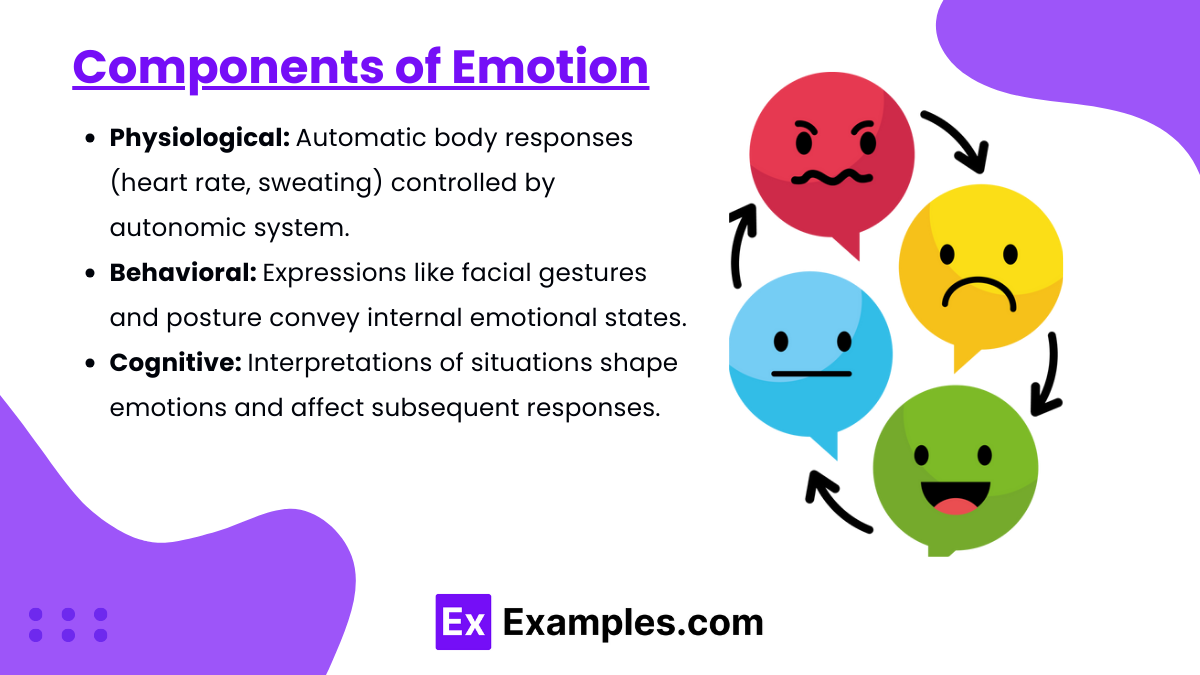
- Physiological: Body’s automatic responses (e.g., heart rate, sweating) as part of the autonomic nervous system, especially the sympathetic division.
- Behavioral: Expressive behaviors, like facial expressions, body posture, and tone of voice, which convey emotional states.
- Cognitive: Personal interpretations or appraisals of situations that influence the experienced emotion and subsequent response.
3. Universal Emotions
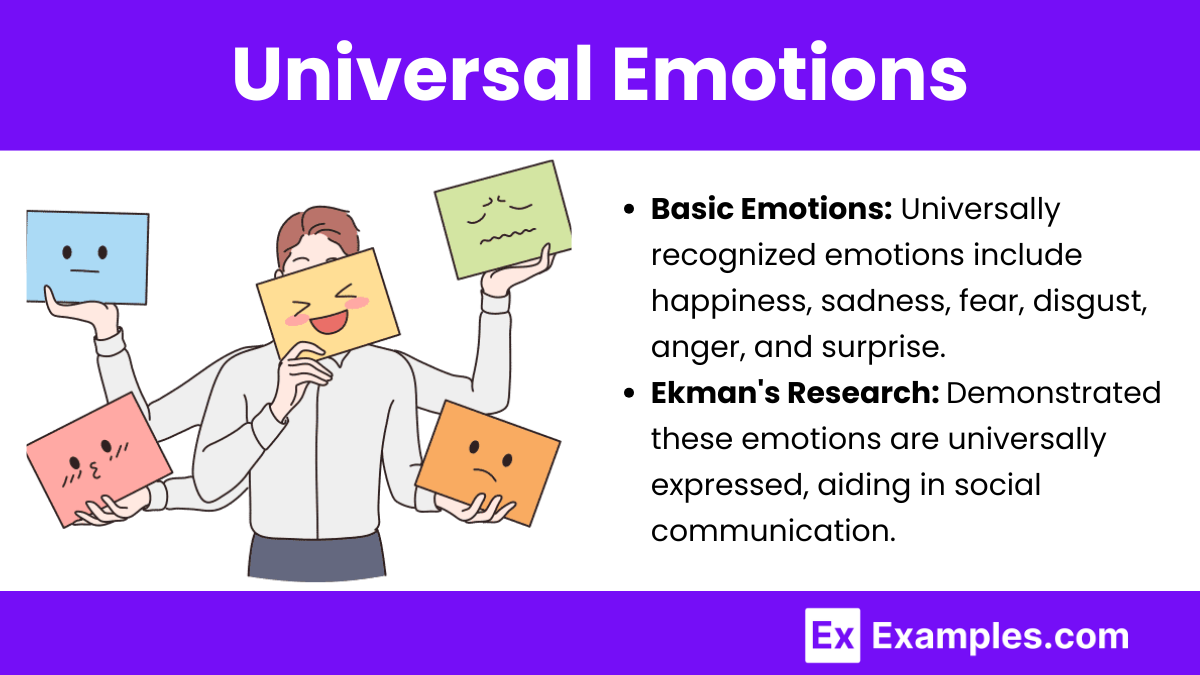
- Basic Emotions: Cross-culturally recognized, typically including happiness, sadness, fear, disgust, anger, and surprise.
- Ekman’s Research: Showed these emotions are universally expressed through facial expressions, providing evolutionary insight into emotional recognition and social communication.
4. Biological Basis of Emotion
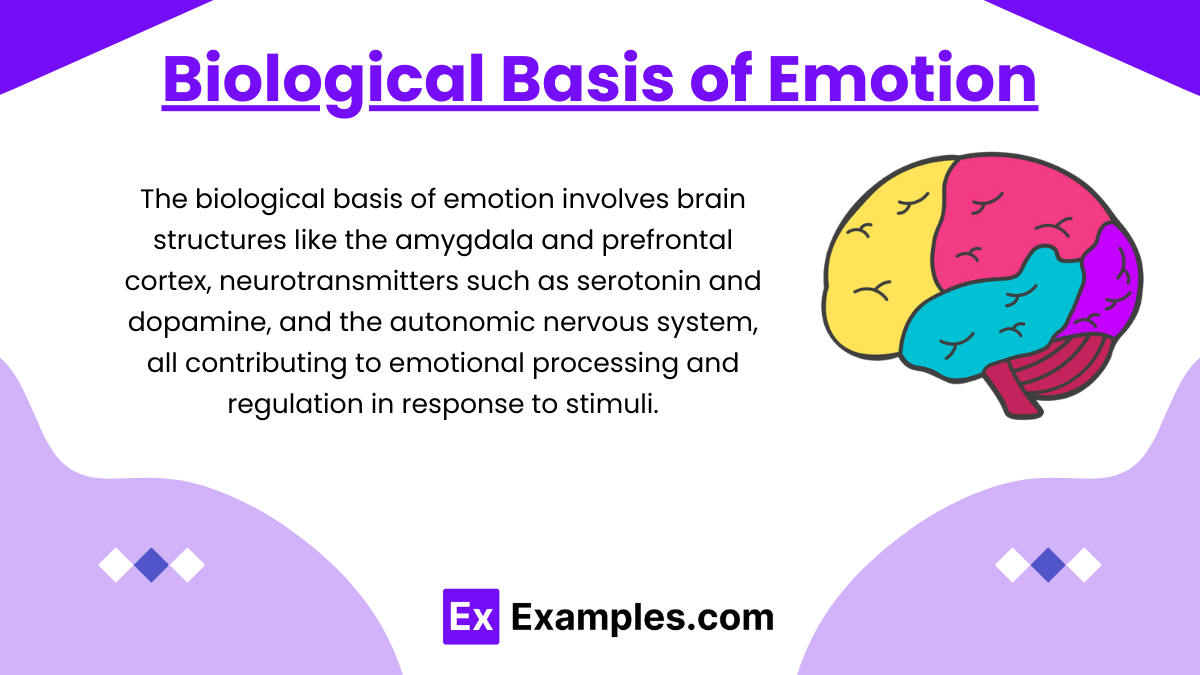
- Amygdala: Central role in processing emotions, especially fear and aggression, and attaching emotional significance to memories.
- Prefrontal Cortex: Involved in regulating emotional responses, decision-making, and assessing the social implications of emotional responses.
- Hippocampus: Plays a role in forming memories, especially those tied to emotional events.
- Hypothalamus: Coordinates the autonomic and endocrine responses to emotions (e.g., increasing heart rate in fear).
5. Stress and Coping Mechanisms
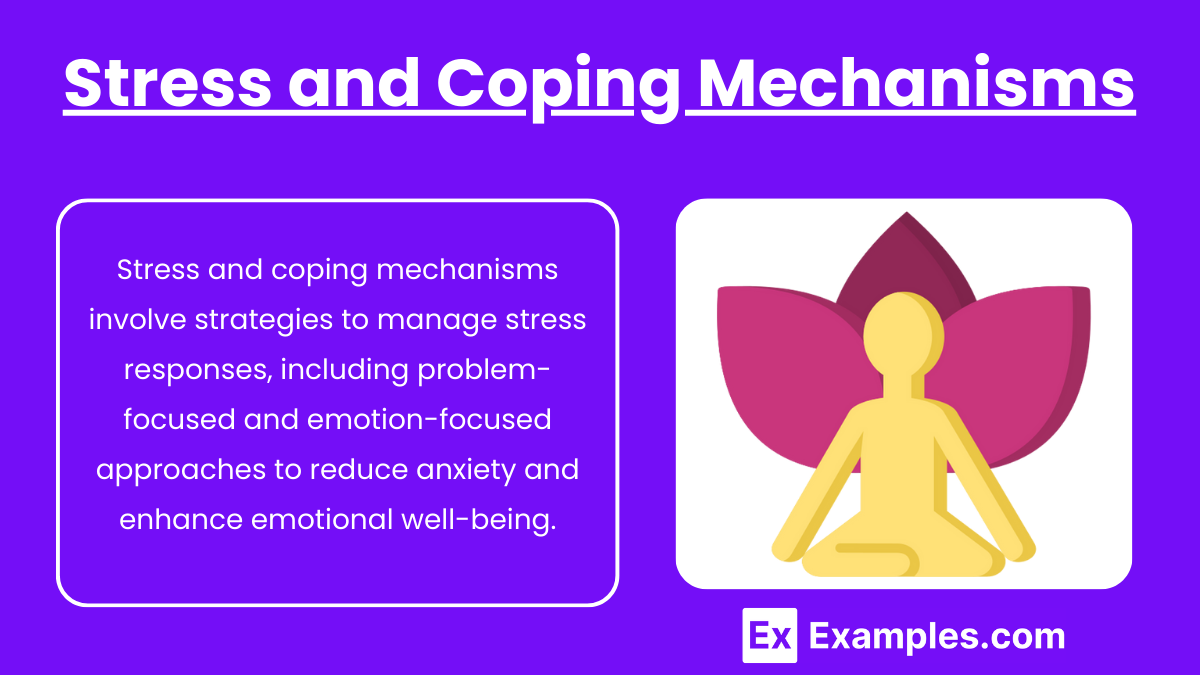
- Understanding how chronic and acute stress impacts emotional regulation, and the role of cortisol and adrenaline in the body.
- Coping Strategies:
- Problem-focused coping: Directly addressing the source of stress.
- Emotion-focused coping: Managing emotional responses, such as through mindfulness or emotional support.
Examples
Example 1: Role of the Amygdala in Fear Response
- The amygdala detects threatening stimuli in the environment, triggering the “fight-or-flight” response.
- When the amygdala identifies a potential danger, it activates the hypothalamus, initiating a cascade of autonomic responses (e.g., increased heart rate).
- This response helps prepare the body to react to perceived threats, playing a crucial role in survival.
Example 2: Influence of the Prefrontal Cortex on Emotional Regulation
- The prefrontal cortex modulates emotional reactions, allowing for thoughtful responses instead of impulsive ones.
- It evaluates the potential outcomes of emotional responses and can inhibit aggressive or inappropriate behaviors.
- This region is essential for managing emotions in social settings and making decisions influenced by emotional states.
Example 3: Impact of Neurotransmitters on Mood (e.g., Serotonin)
- Serotonin levels influence mood, with low levels often associated with depression.
- Medications that increase serotonin availability (e.g., SSRIs) can help elevate mood and improve emotional well-being.
- The role of neurotransmitters like serotonin shows the biochemical basis of mood regulation and emotion.
Example 4: Universal Emotions and Cross-Cultural Expression
- Basic emotions, such as happiness, sadness, fear, anger, surprise, and disgust, are recognized across cultures.
- Universally expressed through facial expressions, these emotions are thought to have evolved as survival mechanisms.
- This supports the idea that some emotional responses are hard-wired and serve adaptive purposes.
Example 5: Effects of Chronic Stress on Emotional Health
- Prolonged exposure to stress can lead to heightened cortisol levels, negatively affecting mental health.
- Chronic stress impacts emotional regulation, potentially leading to anxiety, depression, or irritability.
- Understanding stress’s effects on emotion is essential for developing coping mechanisms and maintaining mental well-being.
Practice Questions
Question 1:
Which brain structure is most directly involved in initiating the “fight-or-flight” response in reaction to fear?
A) Prefrontal cortex
B) Amygdala
C) Hippocampus
D) Hypothalamus
Answer: B) Amygdala
Explanation:
The amygdala plays a central role in detecting threats and triggering the body’s “fight-or-flight” response through its connection to the hypothalamus.
Question 2:
What is the primary function of serotonin in emotional regulation?
A) Enhances aggressive behavior
B) Lowers physiological arousal during stress
C) Regulates mood and contributes to feelings of well-being
D) Decreases the activity of the prefrontal cortex
Answer: C) Regulates mood and contributes to feelings of well-being
Explanation:
Serotonin is a neurotransmitter associated with mood regulation, and low levels are linked to depression and mood disorders.
Question 3:
Which theory of emotion suggests that we experience physiological arousal followed by cognitive appraisal to label the emotion?
A) James-Lange Theory
B) Cannon-Bard Theory
C) Schachter-Singer Theory
D) Lazarus Theory
Answer: C) Schachter-Singer Theory
Explanation:
The Schachter-Singer (Two-Factor) Theory posits that emotion arises from physiological arousal followed by a cognitive interpretation to identify the specific emotion.

